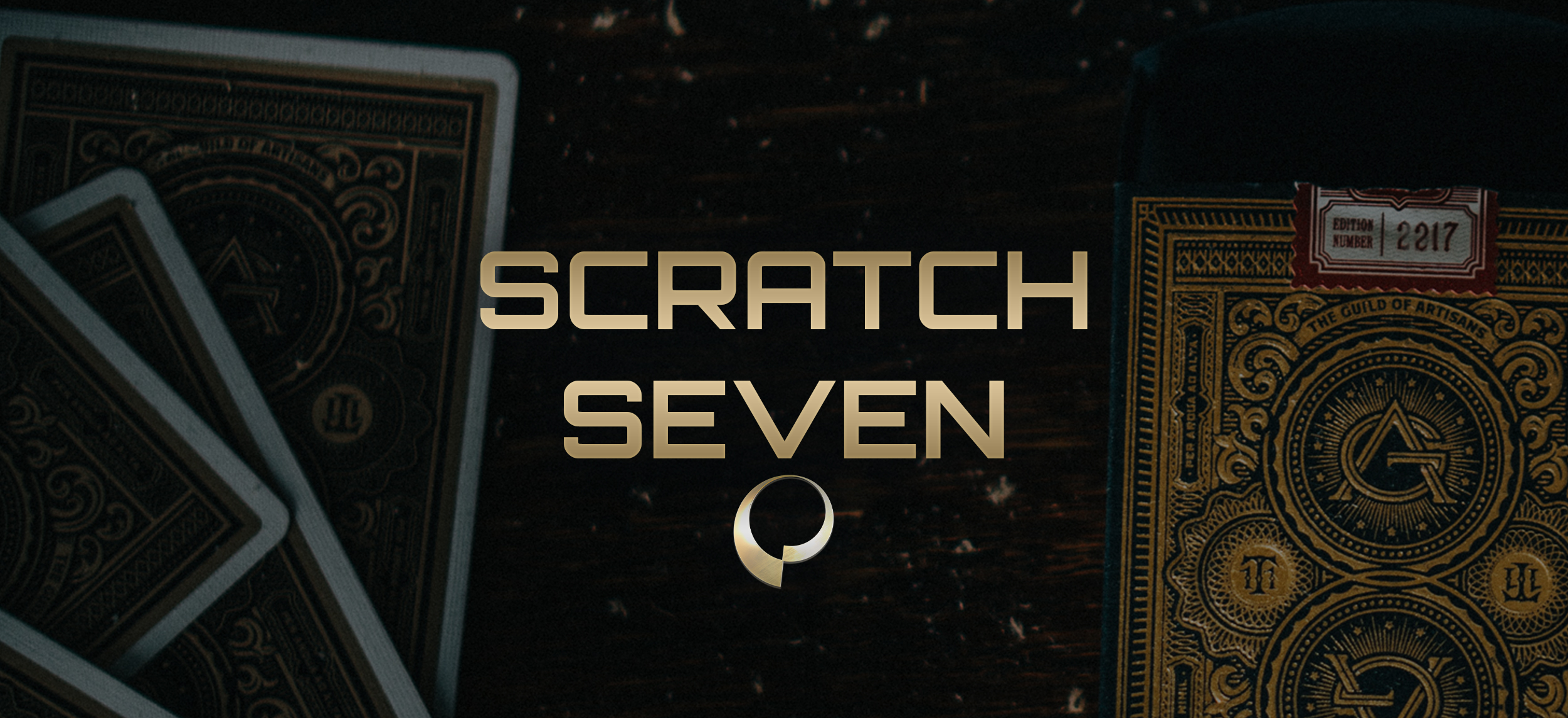FTL (faster than light) and cryo technology revolutionized space travel in the Fractalverse, yet most expeditions came with plenty of downtime for crew members. Card games like Scratch Seven quickly gained popularity and were commonly played on spaceships throughout the cosmos. Captain Falconi taught Kira how to play during the events of To Sleep in a Sea of Stars. Now, you’re invited to play this traditional spacer card game.
Rules
The goal is to accumulate as many sevens as possible.
You will need a standard deck of cards (no jokers), at least 2 players, and poker chips or substitute.
After shuffling the deck, each player draws one card to determine their position at the table. The holder of the card closest to 7 becomes the dealer. In games with a house dealer, the winner of the draw becomes the button player only (the player last to act on any given hand). In casual play, the dealership shifts to the next player in a clockwise manner with each subsequent hand. If a tie occurs, the tied players continue to draw until a clear winner emerges.
Order of Play
Following the draw, players either ante up or place their blind bets (see betting for details). Then each player is dealt three cards and four community cards are dealt face-down in the middle of the table.
The first community card is turned over, and the initial round of betting takes place, with players acting in a clockwise fashion, starting with the first eligible player (again, see betting for details).
At the conclusion of betting, the second community card is turned over, and a second round of betting takes place.
This continues until every community card is face up and the fourth and final round of betting has concluded.
At this point, players turn over their cards, and the player with the most points wins.
Scoring
Players score by accumulating as many sevens as possible. This is done by either drawing 7s (which are worth one point each) or by adding the value of different cards in order to reach a multiple of seven. The value of cards is not actually multiplied, except when playing under variant rulesets. Multiples are worth the number of sevens they contain. If, for example, the player has a 3, an 8, and a 10, the sum of the three cards is 21, which equals three 7s and a score of three.
All multiples must be exact. If the summed value of a player’s cards is 24, the player may not claim to have 21 as part of that 24 unless some of the player’s cards add up to exactly 21.
Player’s cards include both cards in the hand and community cards. 7s dealt as community cards count as points for all players.
- Face cards go by their numerical value (jacks are eleven, queens twelve, kings thirteen)
- 7s count double IF you have all four
- Aces low
- No wild cards
STRAIGHT SWEEP: highest natural hand in Scratch Seven, consisting of four kings, two queens, and an 8, for a count of 84 and a score of twelve.
FULL SWEEP: highest hand in Scratch Seven, consisting of four 7s, two kings, and a 9, for a count of 91 and a score of thirteen.
Betting
Betting proceeds in one of two ways.
(I) If only two players are present, then both players pay an ante before dealing. Thereafter betting starts with the non-dealing player and is done in rounds after each community card is turned over. Players may check, fold, or raise in every round.
(II) If three or more players are present, betting starts with two blind bets prior to dealing: the player dealing places roughly half the minimum bet (small blind), and the player after places the full minimum bet (large blind). In games with a house dealer, the player to the left of the button places the first blind bet. Thereafter, betting starts with the player to the left of the blinds and is done in rounds after each community card is turned over. Blinds are considered live bets, and thus players may not check on the opening round. The player who placed the large blind has the right to raise on the first round if no other player has raised. Aside from the restriction on checking in the first round, players may check, fold, or raise in every round.
If all players check, play continues to the next round with no money or chips added to the pot.
Practical Example
Example: Kira is dealt a 2, an 8, and a jack for an initial count of 21, score of three.
Round 1: First community card is an ace — Kira now has a count of 22 and a score of three. Initial bets are placed.
Round 2: Second community card is a 5 — Kira counts 27, still a score of three. Second round of betting follows.
Round 3: Third community card is a 7 — Kira now has a count of 34, but if she separates out the 7 and the added 21, that gives her a score of four. Third round of betting follows.
Final Round: Fourth community card is an 8 — Kira counts 42 for a total score of six.
Special Rules
Players may not use overlays, calculators, or any other computer to assist with math. Players may use their fingers, toes, tentacles, or pencil and paper.
If additional difficulty is desired, multiplication may be used along with addition to create powers of seven. Cards may be multiplied in any order players want. This a rare variant outside of competitive play.
Have you subscribed to The Paolini Post?
Newsletter subscribers got an exclusive first look at the Scratch Seven rules. If you haven’t already, be sure to sign up below!

